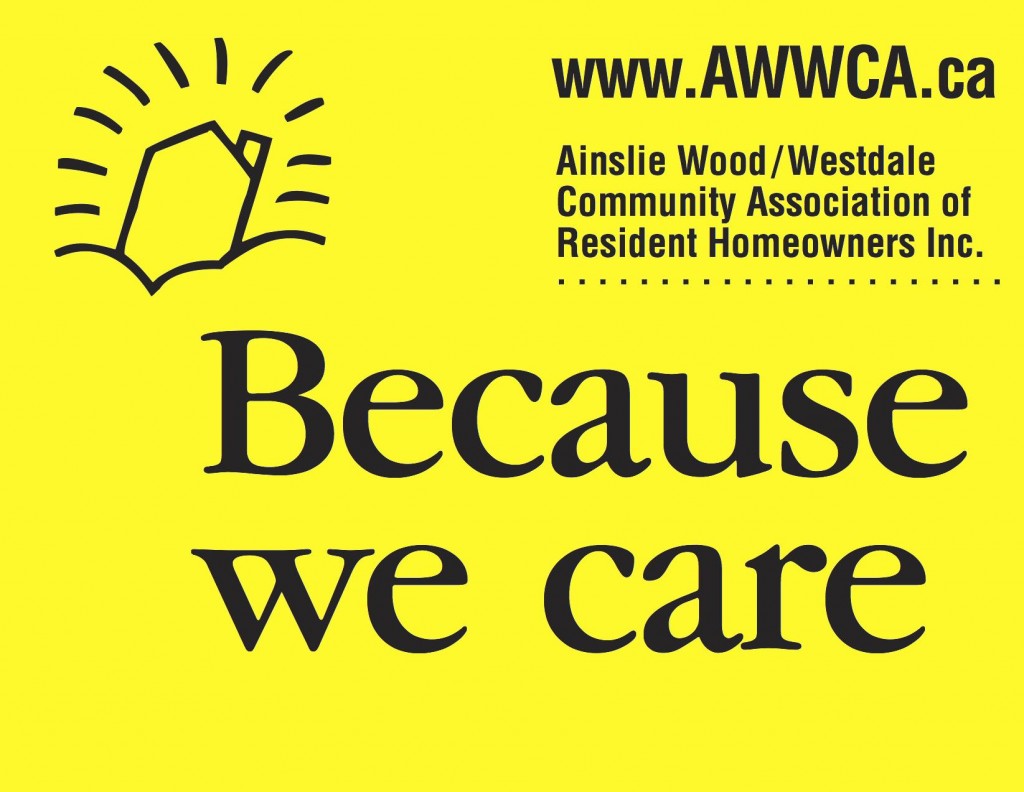Frequently asked questions about the AWWCA
-
Question
What is the purpose of the AWWCA’s house sign? Who is the message for, and will they understand? I’m not sure what it actually means. What is a “radiant house sign”? And “Because We Care”– about what? Let me know so I can consider putting one up.
-
Answer
The message is for all passers-by, to show them there is an organization whose members care about their community. The full name of the AWWCA is on the sign. But the visual image tells us much.
Local artist and AWWCA member Marla Panko designed our logo when the AWWCA began in 1998. It is a simple line drawing of a house set into a few gentle curves, crowned with a series of radiating lines. The image of the house is quite simply one of brightness, joy, happiness, and contentment. We refer to it as the “radiant house”—a glowing example of a home nestled snugly in the gentle confines of a neighbourhood.
There are times, when the going is tough, that one might be tempted to consider changing the radiant lines to droplets of sweat and the tipping house to one that is barely hanging on—which it does—much like the “little engine that could.”
The AWWCA’s mission is to preserve, protect, and enhance the Ainslie Wood Westdale community environment and the quality of life for all residents. We aim to promote balance in our community and our vision is a safe, inviting, beautiful community where all can experience enjoyment of their homes. And just like the little engine, “We think we can . . .We think we can.” We’ve certainly done a glowing job so far.
We recommend members put the sign in a prominent place in a window facing the street. The sign arouses curiosity and provides a conversational point whereby members can explain to others what the AWWCA is. Having learned about the AWWCA after inquiring about the sign, some have become members. Also, residents are encouraged when they see the house signs in the community and know they are part of a much larger and positive force in our community.
Neighbourhood News & Views, Autumn 2004, p. 21

